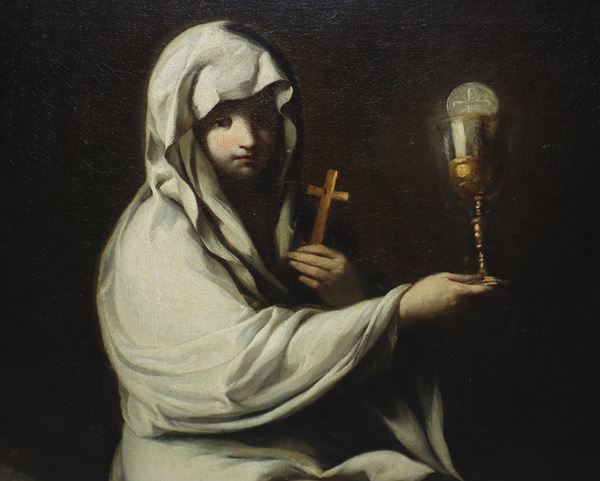4
Fedele Fischetti (Napoli, 1732 - 1792)
Faith
H 86x66 cm
Expertise by Professor Claudio Strinati: «Very delicate and beautiful painting to be referred to the very first phase of the great Neapolitan painter, known later in his great maturity for a whole series of grandiose cycles for noble palaces of the Neapolitan city (and also for some magnificent areas of the countryside) and above all for a series of frescoes in the Royal Palace of Caserta mostly executed between the seventh and eighth decades of the eighteenth century.
A comparison with some of his major works leads us to recognize the same hand as our painting but still in a youthful phase when Fischetti was known as a refined and cultured decorator also responsible for activities that today we would define as instrumental such as the embellishment of carriages or ephemeral liturgical apparatus intended for celebrations and public ceremonies.
Probably this remarkable image of the Faith could have been born in a context of this type even before the Master put his hand to his great works.
And it is not excluded that there may also be a graceful and < span style="background-color: hsl(var(--bs-white)); color: var(--bs-card-color); font-size: var(--bs-body-font-size); text-align: var(--bs-body-text-align);">intimate personal echo (a sort of symbolic self-portrait) depicting the picture the Allegory of Faith and Faithful being the name of the author himself.It is therefore a painting to be dated precisely to the middle of the century eighteenth when Fisichetti couldn't have been even twenty, that's how much he isthe freshness and quality of thought-provoking image modelingin any case already at a commission of very high social rank, that rank which Fischetti then pursued throughout his very industrious and very successful existence.
The state of conservation is excellent.
Yours truly,
div>
Claudio Strinati»








